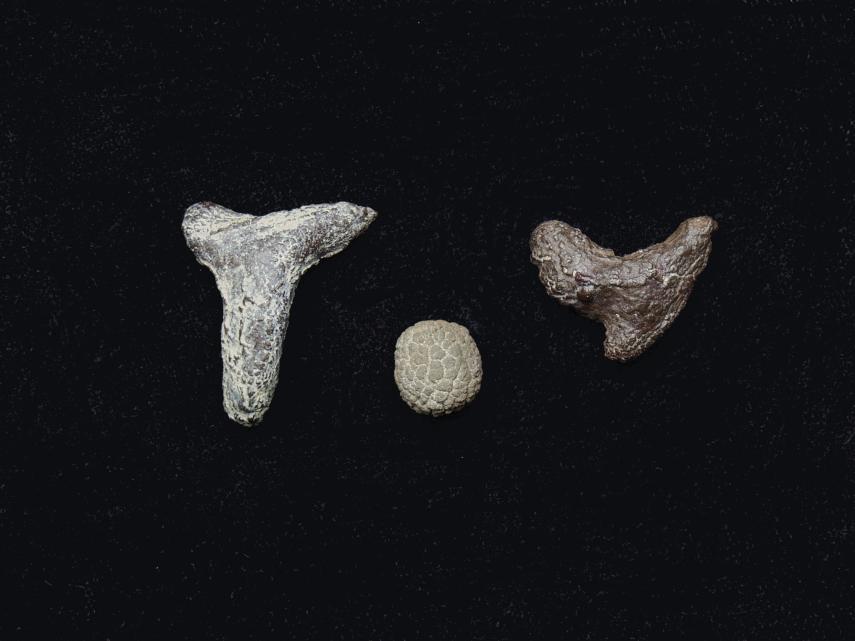
 DoneThat
DoneThat
The London Clay, Walton-on-the-Naze, Essex, England


The Red Crag cliffs showing an obvious band of fossil shells which are mostly the Dog cockle, (Glycymeris). Some current bedding is also visible.
The foreshore at low tide is a good place to search for fossils from both the Red Crag and the London clay. The most numerous fossils from the London Clay are small Sharks teeth and pieces of wood although both bird and fish skeletons have been found.
| Comment | Fossils from the Red Crag |

The expanse of London Clay exposed at low tide showing the same clay at the base of the Red Crag cliffs in the background.
It is easy to find fossils from this clay just by looking along the foreshore at low tide. The most common are pieces of fossilised wood usually just a few inches in length. I also picked up two fossil shark's teeth and a rather nice little fruit about the size of a large pea in about 20 minutes without trying very hard. This is a good place for children to go fossil hunting but only at low tide!
| Comment |

These are the fossils that I picked up from the beach in about 20 minutes of searching as mentioned on the previous picture.
Two shark's teeth and a rather nice little fruit of some sort. I will admit that the teeth are not in the best of condition, although the condition of the fruit is much better, but they required very little effort to find. The fruit in the centre measures about a half inch across the diameter.
| Comment |

This shows pieces of fossil wood, the long narrow dark brown objects in the centre of the picture, laying on the beach. The London Clay and, consequently, the fossils are about 50 million years old.
The fossils here are, literally, just lying about on the foreshore. You are most likely to find fossil wood, sharks teeth and small fruits. Bird and fish skeletons have been found but they are not at all common and they would be found, in situ, in the London Clay.
| Comment |

This shows the London Clay at the base of the Red Crag cliffs. Some stratification can be seen.
The junction between the Red Crag and the London Clay is a discontinuity. There are about 48 million years of sediments missing!
| Comment |

In this patch of detritus at the foot of the cliffs, washed out of the London Clay by the sea, there were many pieces of fossilised wood, phosphatic nodules and possibly other fossils.
| Comment |